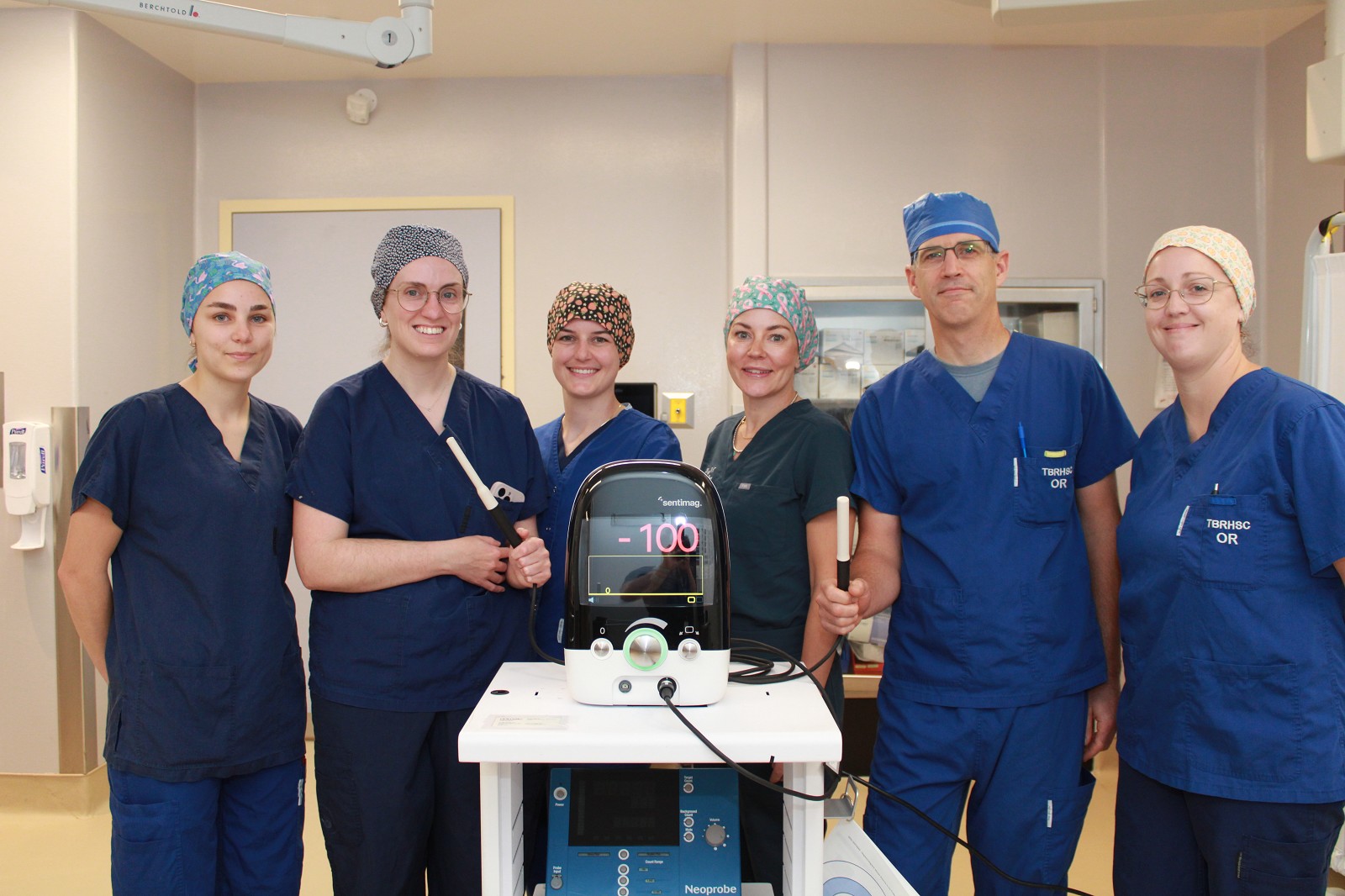New Magseed System Makes Locating Breast Cancer Tumours Easier, Thanks to One Anonymous Donor
Published Monday, October 27, 2025

From left to right: Camryn Sorel, Registered Nurse, Operating Room; Dr. Laura Kerr, MD, FRCSC; Rheanne Brown, Registered Nurse, Operating Room; Kayla Carlson, Registered Nurse, Operating Room; Dr. Matthew Holmes, MD, FRCSC; and Lisa Robinson, Registered Nurse and Operating Room Team Lead all from Thunder Bay Regional Health Sciences Centre pictured with the new Magseed system.
Before breast cancer surgeons can perform a lumpectomy, radiologists need to locate the tumour using digital imaging in a process called localization. For the last 50 years or so, localization meant inserting a thin wire that surgeons could follow to the tumour.
However, sometimes it was challenging to find the tip of the wire, and there was also a risk that the wire would move. Most women found the wire to be uncomfortable and even painful, making a stressful and frightening experience even worse.
But that's changed now, thanks to one anonymous donor. Today, surgeons at the Hospital use the Magseed system, a tiny, rice-sized device for accurate localization without uncomfortable wires.
Dr. Matthew Holmes, a surgeon at the Thunder Bay Regional Health Sciences Centre who performs breast cancer operations, said that the Magseed technology makes surgery easier.
“The wires worked satisfactorily for some lesions, but it was often challenging to pinpoint the exact location of the tip of the wire because of dense tissue, deep location, and so on,” Dr. Holmes said. “The Magseed system works so much better. We can more accurately localize the position of the seed, so it's more reliable and compatible with modern surgical techniques.”
The technology is highly advanced, but relatively straightforward. Breast radiologists use digital imaging to insert a small, magnetized device about the size and shape of a piece of rice into the tumour. During a lumpectomy, the surgeon uses a special wand-like device to locate exactly where the tumour is by detecting the magnetized device.
The system is also much more comfortable for women. Unlike the old wire system, the patient will not feel the Magseed once it's inserted. In some circumstances, the Magseed can be inserted days or even weeks before surgery, and women don't have to stay still or worry about it moving as they did with wires.
“The Magseed is a more efficient system allowing us to complete more surgeries that require localization on a given day,” Dr. Holmes said.
Of course, the most important factor with any new medical treatment or technology is patient outcomes. Clinical trials showed that the Magseed system is at least equal to and possibly better than placing wires.
“We are very fortunate to have this technology,” Dr. Holmes said. “The Magseed technology modernizes the way we do breast cancer surgeries and improves the patient experience. Thanks go to the Hospital and to the anonymous donor who helped us bring this in.”
As with most new technology, this new Magseed localization system is more expensive than old techniques. But thanks to one anonymous donor, women in Northwestern Ontario now have access to this cutting-edge procedure for better patient care.
If one person can bring so much change to our region, imagine what could happen if we all pull together!
You continue to have an impact on patients at the Hospital every single day through your donations to the Thunder Bay Regional Health Sciences Foundation, your participation in Foundation events, and your purchase of Thunder Bay 50/50 tickets.
Buy a Thunder Bay 50/50 ticket, attend a Foundation event, or donate directly to the area of your choice at: healthsciencesfoundation.ca/donate
Article By: Graham Strong